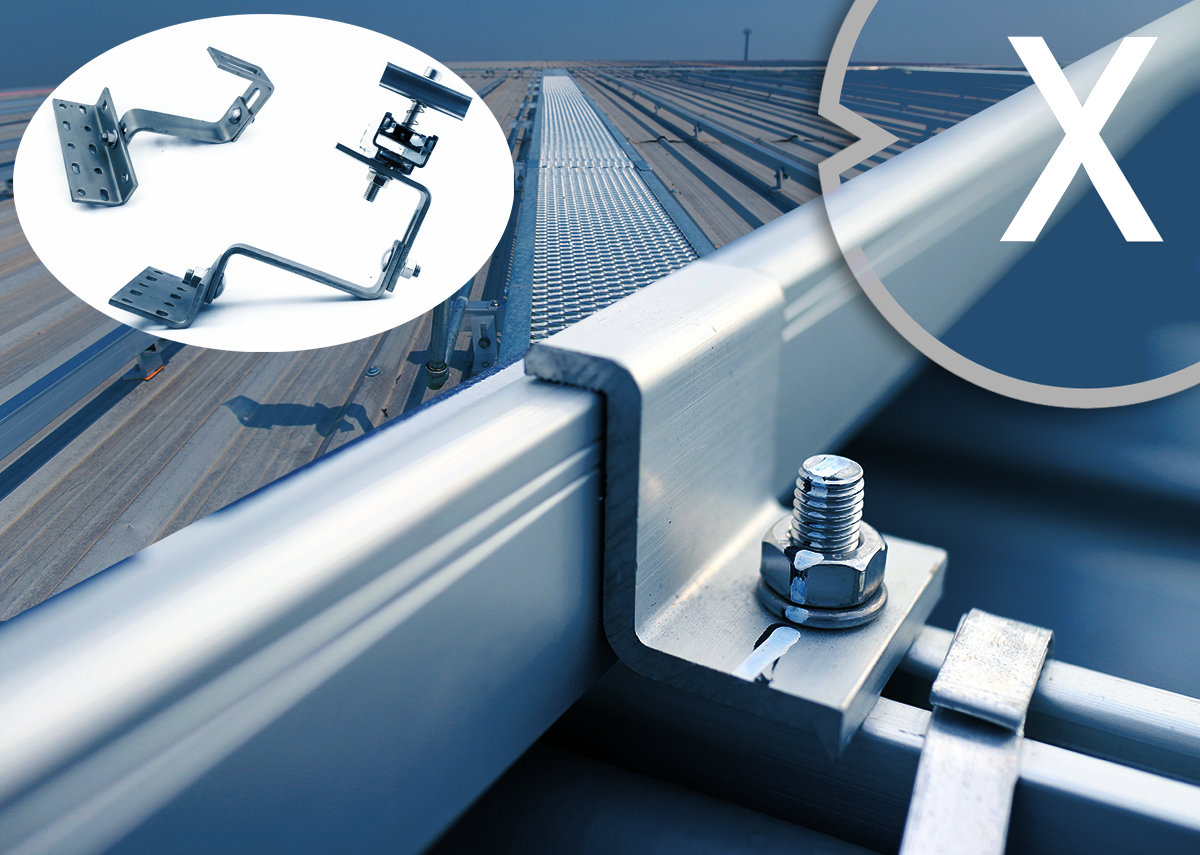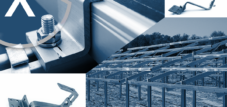Manufacturers and suppliers of solar/photovoltaic mounting systems and substructures
We collaborate with one of the leading manufacturers and suppliers of solar/photovoltaic mounting systems and substructures. This partnership allows us to offer our customers high-quality and reliable mounting solutions for their solar projects.
Our cooperation partners are known as the top ten manufacturers in the solar industry. They have earned an excellent reputation for their innovative and high-quality mounting systems. The products are characterized by their robustness, ease of installation, and high efficiency.
Through this collaboration, we can offer our customers a wide range of mounting systems and substructures tailored to various applications and projects. Whether for roof installations, ground-mounted systems, or special architectural integrations, we can access the extensive product range to implement customized solutions for our customers.
Another advantage of this collaboration is the excellent customer service. The company supports us and our customers with technical expertise, training, and comprehensive consulting. Together, we ensure smooth planning, design, and installation of the assembly systems to achieve the best possible results.
Furthermore, we place great emphasis on sustainability and environmental protection. Our mounting systems are designed to achieve maximum energy efficiency while minimizing environmental impact. This focus on sustainable solutions perfectly aligns with our own vision of promoting clean and renewable energy.
Thanks to our partnership, we can offer our customers first-class mounting systems and substructures that meet the highest quality standards. We are proud to work with one of the top ten manufacturers and suppliers in the solar industry and to support our customers in realizing efficient and reliable solar systems.
Plan your solar system for the most common applications conveniently online with our solar system planner!
With our user-friendly solar system planner you can plan your individual solar system online. Whether you need a solar system for your home, your business or for agricultural purposes, our planner offers you the opportunity to take your specific requirements into account and develop a tailor-made solution.
The planning process is simple and intuitive. You simply enter relevant information. Our planner takes this information into account and creates a tailor-made solar system that meets your needs. You can try out different options and configurations to find the optimal solar system for your application.
Additionally, you can save your plan to review later or share with others. Our customer service team is also available to answer your questions and provide support to ensure your solar system is optimally planned.
Use our solar system planner to plan your individual solar system for the most common applications and advance the transition to clean energy. Start now and take an important step towards sustainability and energy independence!
The solar system planner for the most common applications: Plan the solar system online here - Image: Xpert.Digital
More about it here:
Reliable photovoltaic mounting systems and solar substructures are particularly important for large-scale installations
For large-scale photovoltaic installations, reliable mounting systems and solar substructures are crucial. These systems provide the structural stability and secure fastening required for installing large quantities of solar panels.
Large-scale solar installations often utilize open spaces or flat roofs to maximize solar irradiance. In such cases, robust mounting systems are essential to securely hold the solar modules and ensure they withstand changing weather conditions. High-quality solar substructures guarantee the correct alignment and tilt of the solar modules to maximize energy yield.
Furthermore, mounting systems for large-scale installations must be capable of enabling efficient installation. Time is a critical factor, as large projects often require the installation of a large number of solar modules. A well-designed system and a streamlined installation process can reduce labor time and lower the overall project costs.
Another important aspect for large-scale installations is the scalability of the mounting systems. Large photovoltaic projects require a flexible and adaptable solution to meet the specific requirements and conditions of the site. Mounting systems that are modular and easily expandable enable efficient scaling of the system.
Reliable mounting systems and solar substructures not only contribute to the safety and stability of the solar modules, but also influence the long-term performance and yield of the system. Through the use of high-quality materials and precise construction, these systems minimize the risk of damage, wear, and misalignment.
➡️ It is important to choose experienced manufacturers and suppliers of photovoltaic mounting systems who have a proven track record of quality and reliability. Careful planning and selection of the right mounting systems and solar substructures can ensure optimal performance and long-term success for large-scale installations.
6 tips to consider when choosing a high-quality solar mounting system
When selecting a high-quality solar mounting system, you should consider the following tips:
Stability and robustness
Ensure that the substructure is made of high-quality materials and is highly stable. It should be strong enough to withstand wind loads, snow loads, and other environmental influences.
Easy installation
Choose a substructure that is easy and efficient to install. A good structure should have a smart design that allows for quick and straightforward assembly.
Flexibility and adaptability: A high-quality substructure should be flexible and able to adapt to different installation locations and conditions. It should be suitable for pitched roofs, flat roofs, and open areas alike.
Resistance to corrosion
Since solar panels are installed outdoors, it is important that the substructure is corrosion-resistant. Look for coatings or materials that prevent rust formation and ensure the longevity of the substructure.
Compatibility with solar modules
Check that the substructure is compatible with your chosen solar panels. It should allow for secure and stable mounting of the panels and offer optimal orientation for maximum energy production.
Certifications and quality standards
Ensure that the substructure meets the required certifications and quality standards. Verify that the product has been tested by reputable testing institutes and complies with applicable standards and regulations.
By considering these tips when selecting a high-quality solar mounting system, you can ensure that your solar system operates stably, efficiently, and reliably in the long term. It is also advisable to seek advice from specialists or experienced installers to find the best possible solution for your specific requirements.
6 examples of assembly system solutions
In the photovoltaic sector, there are numerous mounting systems designed for installing solar panels on various surfaces and locations. Here are six examples of mounting system solutions in the photovoltaic field:
Rooftop mounting systems
These mounting systems are installed on pitched or flat roofs. They typically include frame structures or brackets that securely and firmly attach the solar panels to the roof.
In-roof mounting systems
With this solution, the solar panels are integrated directly into the roof. They serve not only as an energy source but also as an aesthetic element of the building. In-roof mounting systems offer seamless integration of the solar modules into the roof.
Open-field assembly systems
These systems are designed for installing solar panels on the ground. They use posts, frames, and brackets to position the solar modules at the appropriate tilt and orientation. Ground-mounted systems are often used in large solar parks or on agricultural land.
Carport mounting systems
These mounting systems combine solar panels with a covered parking area for vehicles. The solar panels serve as the roof for the carport and simultaneously generate clean energy.
Facade mounting systems
In this solution, the solar modules are installed on building facades. The mounting systems allow for vertical or inclined attachment of the solar modules, in order to use the facade as an energy generator.
BIPV (Building Integrated Photovoltaics) solutions
BIPV integrates solar modules directly into the architecture of buildings. The solar modules can be integrated into roof tiles, facade elements, or windows to generate renewable energy without affecting the building's appearance.
➡️ These examples represent only a selection of mounting systems in the photovoltaic sector. Many other innovative solutions exist, tailored to specific requirements and locations.
Substructures for semi-transparent solar modules
Mounting systems for semi-transparent solar modules, also known as see-through or translucent solar modules, require specialized solutions to accommodate their unique properties. Here are some examples of mounting systems that can be used for semi-transparent solar modules:
Glass-glass substructure
Semi-transparent solar modules often consist of a double layer of glass, with the transparent surface allowing light to pass through. These modules require a special substructure that improves their aesthetic appearance while ensuring structural integrity.
Frameless mounts
Semi-transparent solar panels can also feature frameless designs to improve their aesthetic appearance. Frameless mounting systems are often made of lightweight yet robust materials such as aluminum or stainless steel, providing secure mounting for the panels.
Special fastening methods
Due to the transparency of solar modules, the mounting methods must be designed so as not to impair the visibility of the transmitted light. Invisible or minimally visible mounting solutions are often used here, such as clamping systems that hold the modules securely without compromising the aesthetics.
Adaptation to architectural designs
Semi-transparent solar modules are often used in architectural applications, such as in glass facades of buildings or as canopies. The substructure must integrate seamlessly into the architectural design to ensure an aesthetically pleasing and harmonious appearance.
Consideration of ventilation and heat dissipation
Semi-transparent solar modules can generate heat due to the amount of light they transmit. The substructures must therefore allow for adequate ventilation and heat dissipation to prevent overheating of the modules and maintain their performance.
➡️ It is important to note that the mounting systems for semi-transparent solar panels can vary depending on the manufacturer and specific product. It is advisable to familiarize yourself with the manufacturer's guidelines and recommendations and, if necessary, consult with experts to find the best possible mounting solution for semi-transparent solar panels.
- Plan photovoltaics for warehouses, commercial halls and industrial halls
- Industrial plant: Plan a photovoltaic open-air system or open-space system
- Plan solar systems with photovoltaic solutions for freight forwarding and contract logistics
- B2B solar systems and photovoltaic solutions & advice
From simple solar systems to large-scale installations: Xpert.Solar offers customized solar systems, as well as advice on manufacturers and suppliers
I would be happy to serve as your personal advisor.
You can contact me by filling out the contact form below or simply call me on +49 89 89 674 804 (Munich) .
I'm looking forward to our joint project.
Xpert.Digital – Konrad Wolfenstein
Xpert.Digital is a hub for industry with a focus on digitalization, mechanical engineering, logistics/intralogistics and photovoltaics.
With our 360° business development solution, we support well-known companies from new business to after sales.
Market intelligence, smarketing, marketing automation, content development, PR, mail campaigns, personalized social media and lead nurturing are part of our digital tools.
You can find out more at: www.xpert.digital – www.xpert.solar – www.xpert.plus


